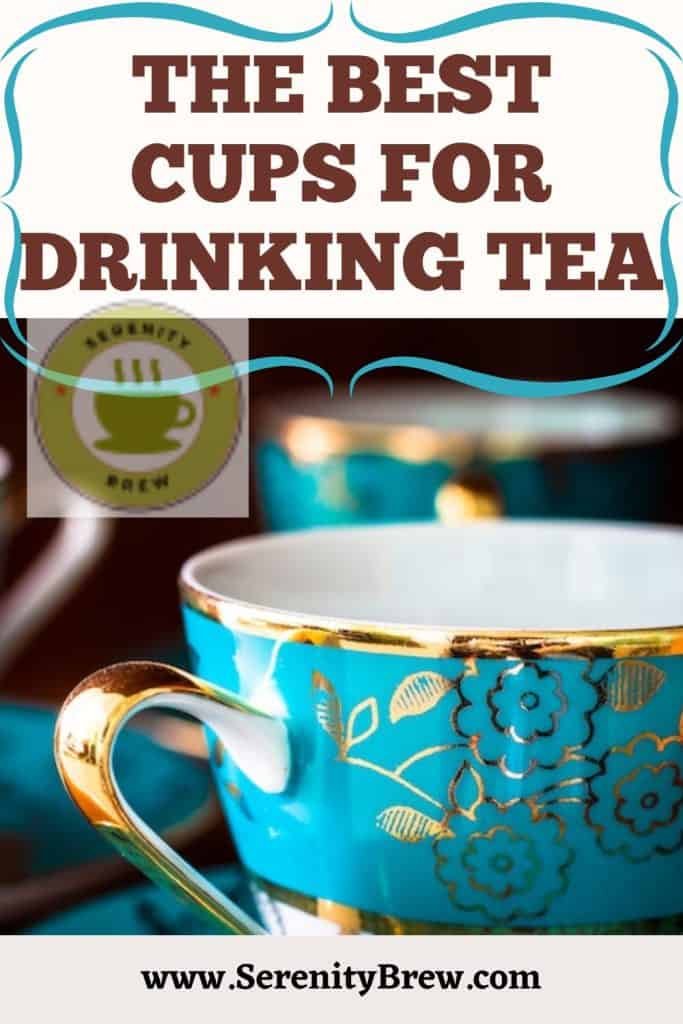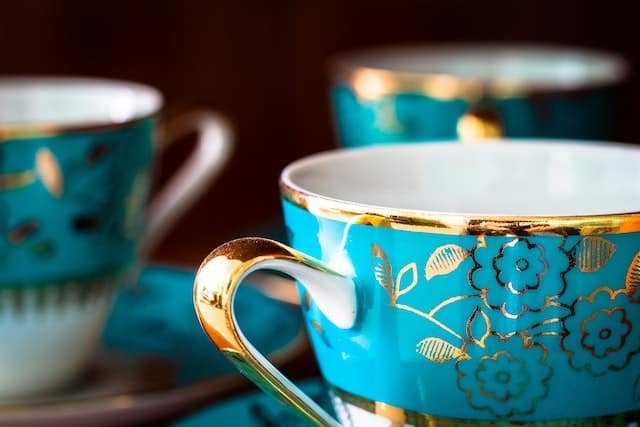
For our tealovers, a cup of tea is never enough. Also, is there any greater joy than drinking tea from a cup you like? With or without handles, large or small, glass or porcelain, there is a perfect cup for every tea. But what are the best cups for drinking tea?
The first cups of tea
According to legend, tea was invented nearly 5,000 years ago by Shen Nung , a Chinese emperor and the father of Traditional Chinese Medicine.
The first written texts about tea appeared more than 1,000 years ago. A very important one, The Tea Classic , written in the year 765 by a Chinese tea master Lu Yu, and which is still being published. In this book, Lu Yu mentions a whole list of utensils needed to make a cup of tea, including a tea bowl .
Tea bowls were, in fact, the first cups of tea. Teacups or tea bowls without handles are still an important (and beautiful) part of tea-drinking cultures in many Asian countries. Cup handles or grips were invented almost 1,000 years later in Europe.
Over the centuries, cups became a symbol of social status or wealth, since they were always common tableware at social gatherings. Showing off the best cups of tea when there were visitors is still a custom in many families.
But if we talk about wealth, it is impossible not to mention what is, so far, the most expensive cup in the world. It is a porcelain cup from the Ming Dynasty belonging to the Emperor who ruled between 1464 and 1487. It is known as “the cup of chickens” since it is decorated with several of these little animals. It is not only incredible that it has survived intact to this day, but that 61 million dollars was paid for it. The happy buyer stated that he usually drinks tea in this bowl every day. The tastes must be given in this life, they say.
But we do not have to go to those extremes to enjoy a good cup of our varieties of Teas with Stevia, either in leaves or in bags .
We tell you which are the cups that will make your tea time a better experience.
Qualities of a good cup of tea
1- It should not be porous: simply because the pores absorb the substances in the tea that give it its flavor and aroma and affect the next infusions you drink in that cup. You will realize that the material is porous because they stain the color of the tea very easily.
2- It should keep the heat of the tea: a cup with a wide rim cools the tea faster, while a tall and narrow one keeps it hot longer and concentrates the aroma. Thin-walled mugs lose heat faster, while ceramic retains heat longer than glass.
3- It must have a thin upper edge: this is essential so that the drink can roll off the edge of the cup and fall on your tongue more easily.
4- It must be chemically safe: If your cup will be made of plastic, it must not contain Bisphenol , which is a toxic substance present in many disposable cups and bottles.
5- The size should be consistent with your teapot: if you usually use leaf tea and you have a small teapot, it doesn’t make sense to drink the tea in a jug or mug . Better to look for a smaller cup.
6- It must be comfortable for your hands: a cup can be very thin but uncomfortable for you, either because of its shape, lack of handles or the size of your hands. Don’t give up comfort for using an overly sophisticated cup.
The best materials for a cup of tea or infusion

Teacups or jugs can be made of different materials. They can be made of plastic, metal, glass, wood, clay, ceramic or porcelain. Not all materials are microwave and dishwasher safe, and some should be cleaned with water only. However, the final decision on which mug to use should depend on many factors, including the tea you are drinking, where you will drink it, whether it is hot or cold, and overall your comfort and experience.
Porcelain
The porcelain known as China is also called hard-paste porcelain, it is a compact, brittle, hard, translucent and impermeable material. It was invented by the Chinese and they kept the manufacturing formula a secret for centuries. It was not until the 18th century that a German alchemist managed to imitate it.
There is another porcelain that is made from animal bone powder, which is called Bone China porcelain . It is more expensive, but it is characterized by its high degree of whiteness and transparency, by its hardness and its high resistance to blows, being one of the noblest and best porcelains. Almost all quality English teaware is made from bone china.
Both porcelains are covered with a vitrified enamel that seals them inside and out and prevents the presence of pores. That is why you will observe that the tannins do not adhere and the cup never stains.
Ideal for savoring your tea to be a unique experience, but it may not be convenient for you to use it daily due to its fragility.
Glass
Glass mugs and mugs meet all the criteria for the ideal tea ware listed above. Glass is also used to prepare tea in teapots.
Ordinary glass, glass painted with the vitrified process and high heat resistant (Pyrex or borosilicate type) do not react at all with tea, but can lose heat quickly depending on their thickness.
Pyrex glass is a good option, almost as good as porcelain and less brittle. Double-walled glass tumblers are a great choice where the inner wall retains heat while the outer wall prevents your hands from getting burned. What’s more, there’s something wonderful about how the tea looks through the two layers of glass.
Ceramics
It is the most frequent material in any tableware store. Pieces made of ceramic are highly resistant. Being made of materials from stones and minerals, they can withstand some knocks, scratches and very rough use without breaking. Since ceramic is very malleable, cups and jugs come in the most diverse forms.
They are ideal for microwaves and dishwashers. But, although they have an internal vitrification process, it is still porous. It is said that a ceramic mug has memory, that is, the porous material keeps some of the flavor of the tea that will mix with the next one you drink. That is the reason why tannins tend to stain them.
To drink every day or to treat yourself with personalized designs, it is the most used cup.
Metal
In the manufacture of cups and especially in the jugs, the most used metal is stainless steel. They are usually covered with materials that retain heat, such as plastic or leather and are best if you are going out with your mug of tea in hand to drink it in the car, or if you go for a walk with your hot or cold tea.
Another metal used in very expensive tableware is silver. As a noble material, it does not interact with tea, so its color does not change. In addition to their cost, the other disadvantage is that they do not hold heat and if you are not careful you will burn your hands. If you have a tea set, never think of polishing your silverware with any product inside the cups as it can be very toxic. I mean, they look great to show off.
Mud
Clay crockery is not only different in each country but in each of its regions. This depends on the materials that make up the floor of the area and the cooking methods that are inherited among the artisans from generation to generation.
Although we believe that clay pottery is an art created by Native Americans, actually in India serving tea in clay cups is the traditional method of drinking it. In fact, on the street they serve Chai Tea in these very thin-walled containers called Kulhad . But these cups are used once and then discarded. They are more ecological than using plastics.
If the clay mugs you have in your home are not sealed on the inside with some enamel, they will be quite porous. That is why they are likely to change the taste of your tea. They can soften it by retaining tannins, but sooner or later these tannins will come back in the next tea you serve.
In the case of drinking Chai Latte Tea , the milk forms a protective layer over those pores, so clay cups work great for these recipes with milk. They can even give you a very nice earthy flavor!
